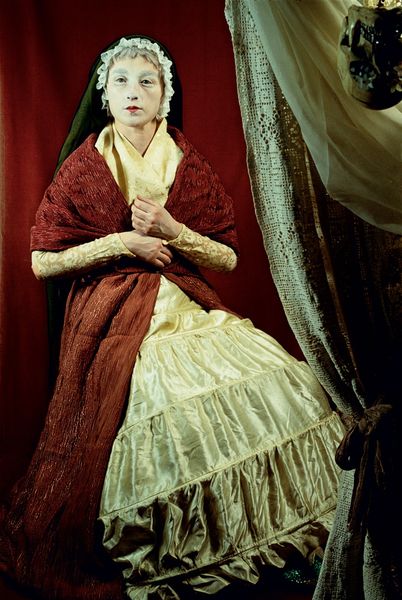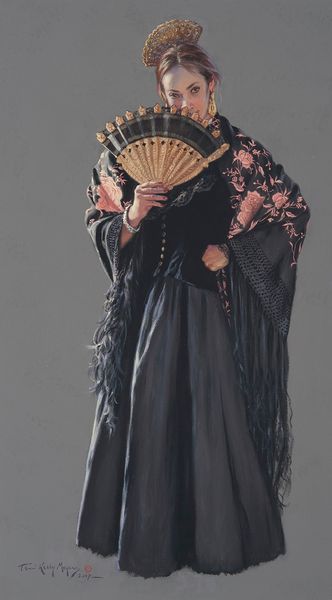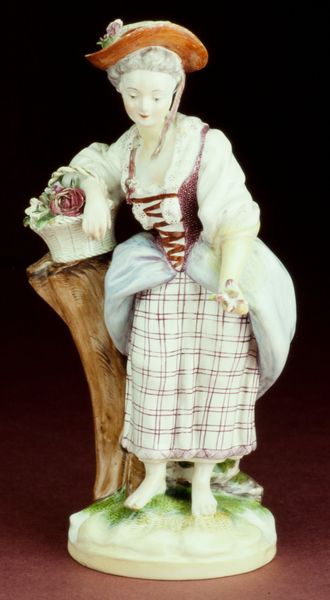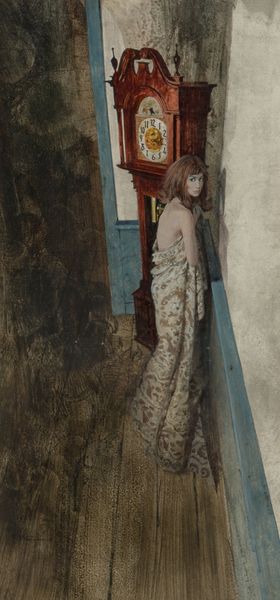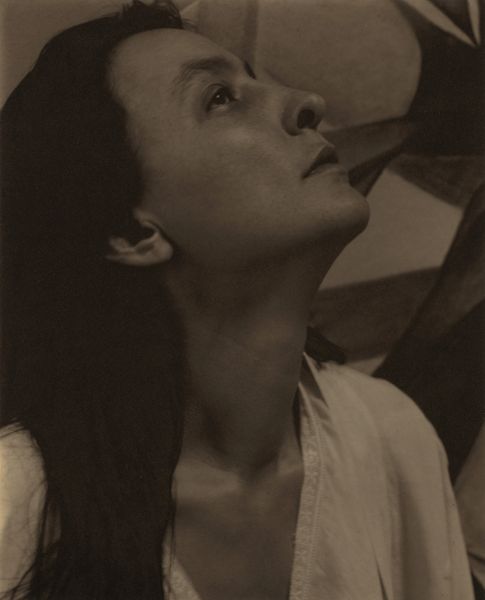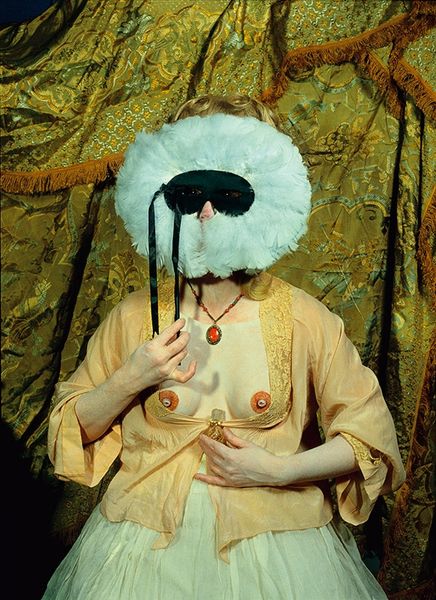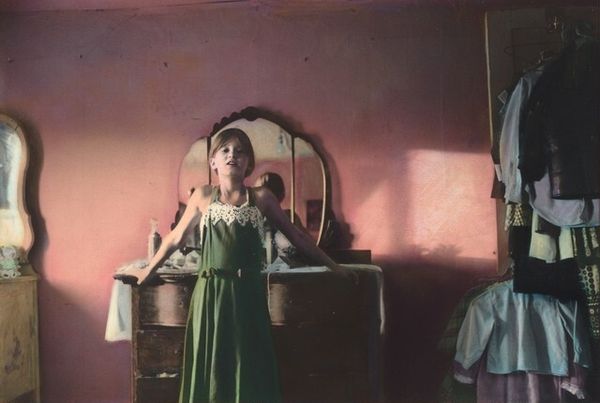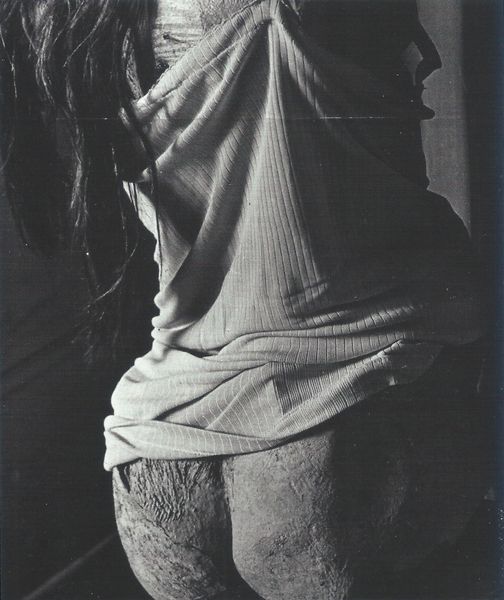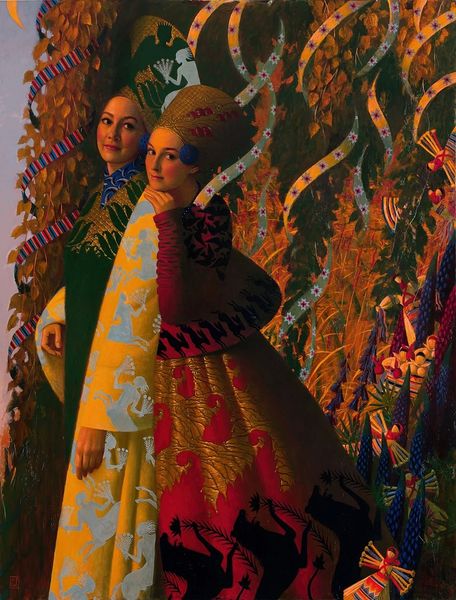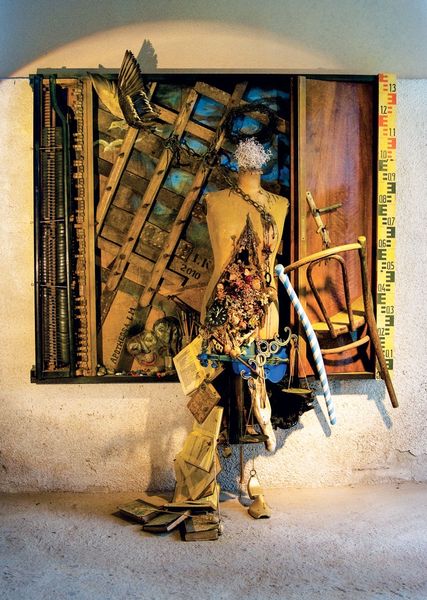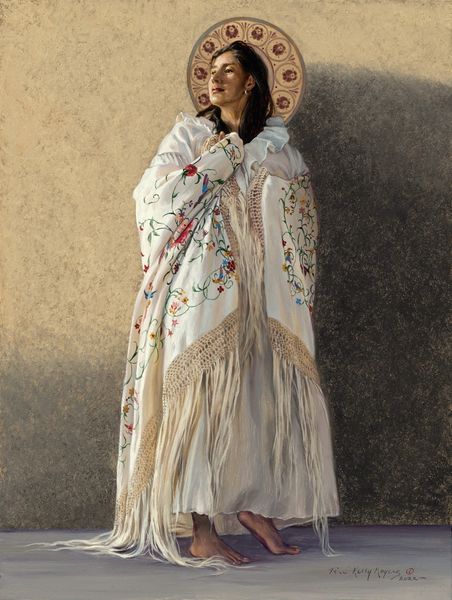
photography
#
portrait
#
conceptual-art
#
appropriation
#
photography
#
traditional dress
#
costume
#
lady
Copyright: Cindy Sherman,Fair Use
Editor: We're looking at Cindy Sherman’s "Untitled #226" from 1990, a photograph that at first glance, has the air of an old master painting. It feels…theatrical. What do you see in this piece? Curator: It's fascinating how Sherman consistently challenges the power structures within art history. Here, she’s clearly playing with the visual language of historical portraiture, those iconic images of women often painted by male artists, which frequently relegate women to the roles of the Madonna, the Seductress, or other simplified tropes. Notice the staging and costuming— what’s she saying by replicating them in a contemporary photograph? Editor: I guess I'm seeing a commentary on how women have been presented throughout history, like a collection of borrowed identities? It's not a real portrait of a specific person, but more like a commentary on portraiture itself. Curator: Precisely. Sherman is investigating the construction of identity, particularly feminine identity, as shaped and defined by cultural forces. The fact that she's the model, photographer, stylist, and makeup artist makes us consider authorship and the politics of representation. She's not just mimicking these tropes; she's dissecting them, inviting us to consider how images reinforce or subvert power dynamics. Editor: So, it's not about the woman *in* the photograph, but about the idea of "woman" being circulated in art and culture? Curator: Exactly. The setting, the clothing, even the facial expression – they're all quotations, strategically employed. What do you make of the title— or the lack thereof? Editor: Well, it pushes me to interpret it myself. It’s “Untitled,” which encourages the viewer to think critically about what's presented, almost refusing a singular narrative. Curator: Indeed. Sherman's deliberate lack of specificity is what allows her to engage with larger cultural dialogues. The Untitled series reflects the multifaceted nature of identity, reminding us how constructed our perceptions are. Editor: That's so helpful to understand. It's more than just a pretty picture; it's actively interrogating how we look and interpret images, and what that says about societal norms. Curator: And how art institutions themselves have perpetuated some of these limiting perspectives through canonization.
Comments
No comments
Be the first to comment and join the conversation on the ultimate creative platform.
